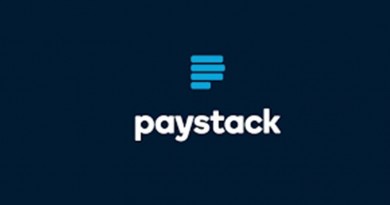Advice to SMEs on how to grow sustainably
By Richard Pepler, CEO of HH Cashflow Finance
Richard Pepler, CEO of HH Cashflow Finance who also sits on the advisory board of the Development Bank for Wales, offers advice to SMEs on how to grow sustainably.
It’s an all too familiar story: A bright and driven entrepreneur has a great business idea; they gather enough capital to get it off the ground; after a year it is starting to trade really well, making a name for itself and building up a loyal customer base. As the work rolls in the fledgling business is stretched to capacity and its founder is forced to spend to take on more staff or equipment to meet the rising demand. Disappointingly, payment does not seem to roll in at the same rate as the work and the business runs out of cash. Suddenly bills cannot be paid, creditors close in and what could, with a little more ready cash, have been a successful business collapses.
Growing your business sustainably to ensure long term success is a challenge. Grow too fast and you risk running out of money but start turning away work and you may lose valuable clients to competitors.
The key to successful growth is managing your cash flow and ensuring you always have access to sufficient capital, which, since the recession, has been increasingly difficult to access via the traditional high street banks.
Happily for SMEs, the funding marketplace is evolving to offer a variety of new financial vehicles that can help finance growth.
The new financial vehicles such as crowdfunding, peer to peer lending, angel investment, cash flow funding and asset finance, now lend more to SMEs than clearing banks lend on overdraft.
Many of them have chosen to specialise and target specific sectors or business models so SMEs now have greater choice than ever in how they finance growth.
Before businesses choose a new lender to finance growth they should ensure they have the basic checks in place to understand and control their cash flow so they can seek out the amount and type of funding will be best suited to their needs.
Here are some basic steps which all business should follow:
Make sure you’re maintaining a consistent bottom-line profit
A business should ensure it has recorded steady growth over a prolonged period of a few years before investing heavily in growth, whether that is in the form of staff, equipment, office space or more.
Draw up a cash flow forecast to ensure the business is secure
SMEs may wish to delay or scale back growth if they
find themselves reliant on the punctual payment of
shutterstock_231569596just one customer or if their supplier’s credit terms are stricter than their own meaning they are paying out money faster than they receive it. Any responsible business owner should ensure there is always some cash to fall back on, don’t embark on ambitious growth plans until funding is in place
Look at market trends
Business owners should keep an eye on both economic and consumer market trends for indications of their company’s staying power. This will also help them identify and research new markets which could support growth
Maintain strict record-keeping to ensure the cash keeps flowing
Payment should be chased quickly and efficiently. Businesses should issue invoices as soon as possible and bank any cash or cheques the moment they arrive. It is worth offering discounts for timely payment and allowing customers to pay by BACS. SMEs should also charge interest on overdue payment where possible. There are now many software packages available that help businesses keep track of payments and invoices and flag up any issues.
Monitor customer behaviour
SMEs should ensure proper credit checks and due diligence is followed when entering any important deal. Where customers prove to be reliable and timely payers, businesses can consider ways to increase income from them. When customers are consistently late with payment business should look at ways to minimise dealings with them and be wary when a customer that has always paid on time starts falling behind as this can sometimes be sign they are facing difficulties and that it is time to scale back business with them.
Consider how you are going to grow
Do you need more staff? New and more advanced equipment? A new office? Business owners must consider the logistics of growth and what they will need to put in place to support it as this will have a major impact on the amount and type of lending they need to finance it.
Chose a lender which suits your business needs
shutterstock_242062819The lending market now offers a range of different financial vehicles which often specialise in certain sectors. SME owners should hunt around and find a lender that suits their needs. While only 8 per cent of firms received advice from their bank last year, according to government research, many of the new style lenders can offer much more than simply funding. They want to develop profitable long term partnerships with SMEs, offering business advice, support and help with financial management. Businesses that enter into a mentoring partnership with a finance provider are twice as likely to survive beyond five years, according to the Federation of Small Businesses. The right lender will adapt its funding in line with its client business needs and will then work with the business to help them manage the credit they receive.
Don’t lose sight of your original business aims
Winning new business is one thing, carrying out the work is another. SME owners should be confident they can carry out incoming work to the usual high standards before they agree to it, otherwise their reputation will be tarnished in the longer term. While finding new markets and winning new clients or customers is vital, staying focused on business output and performance and continuing to develop new products to add value is equally important.
http://talkbusinessmagazine.co.uk/2015/08/14/advice-to-smes-on-how-to-grow-sustainably/



